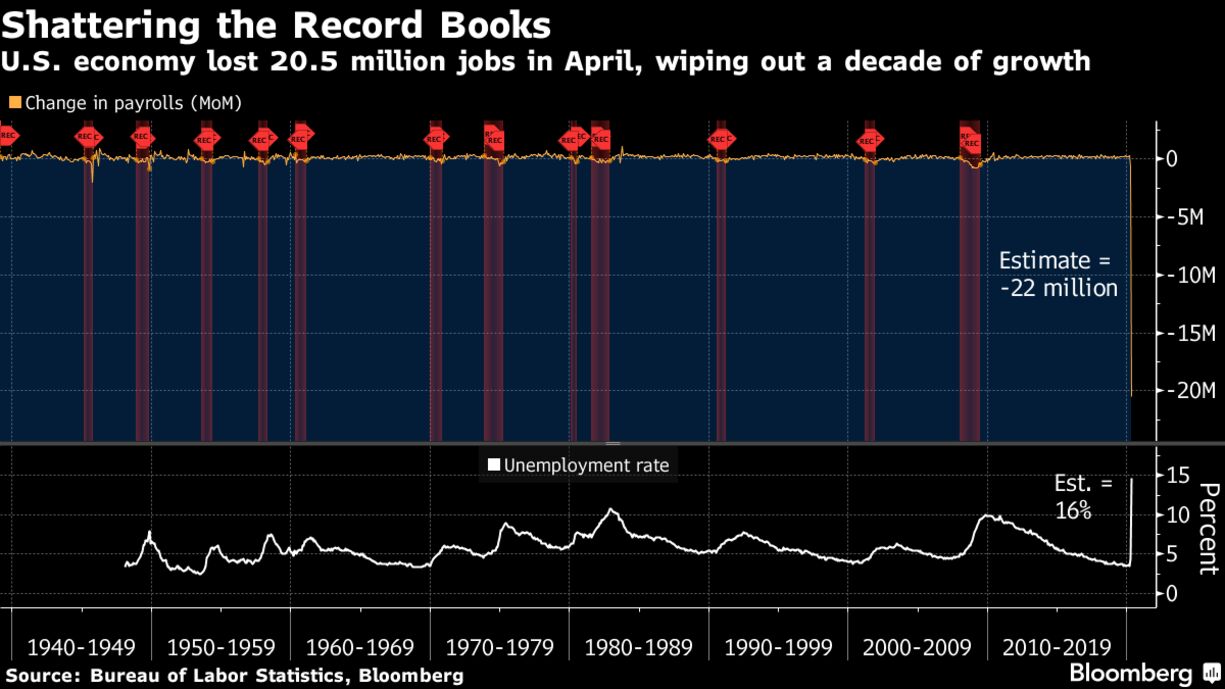It took just one month for the labor market in the world’s largest economy to capsize. It will take longer for the damage to be fully realized. In the harshest downturn for American workers in history, employers cut an unprecedented 20.5 million jobs in April, tripling the unemployment rate to 14.7%, the highest since the Great Depression-era of the 1930s. And it’s only set to worsen in May, as cuts spread further into white-collar work.
“It’s devastating,” said Ryan Sweet, head of monetary policy research at Moody’s Analytics. “There’s someone behind each of these numbers. It’s going to take years to recover from this. There’s a case to be made that a lot of these are temporary layoffs, so hopefully people can return to work quickly as we begin to reopen the economy — but there’s no guarantee in that.”
The coronavirus pandemic brought the U.S. economy to a standstill after a record-long expansion, with April’s losses erasing roughly all of the jobs added over the past decade. It also laid bare just how precarious employment is for vast swaths of Americans, with an outsize impact on lower-paid workers as well as women and minorities.

With a steep recession underway, the destruction of jobs heaps election-year pressure on President Donald Trump to restart the economy and show results by November. But with little containment of a contagious disease that’s killed 75,000 Americans and counting, business is returning unevenly and slowly if at all, and signs are mounting that many employers will be forced to make the cuts permanent.
The pandemic’s initial tremors hit those least able to absorb the blow, with April’s job losses concentrated in lower-wage labor, from hospitality to retail and restaurants. In May, layoffs will extend further into white-collar positions, according to Lydia Boussour of Oxford Economics.
